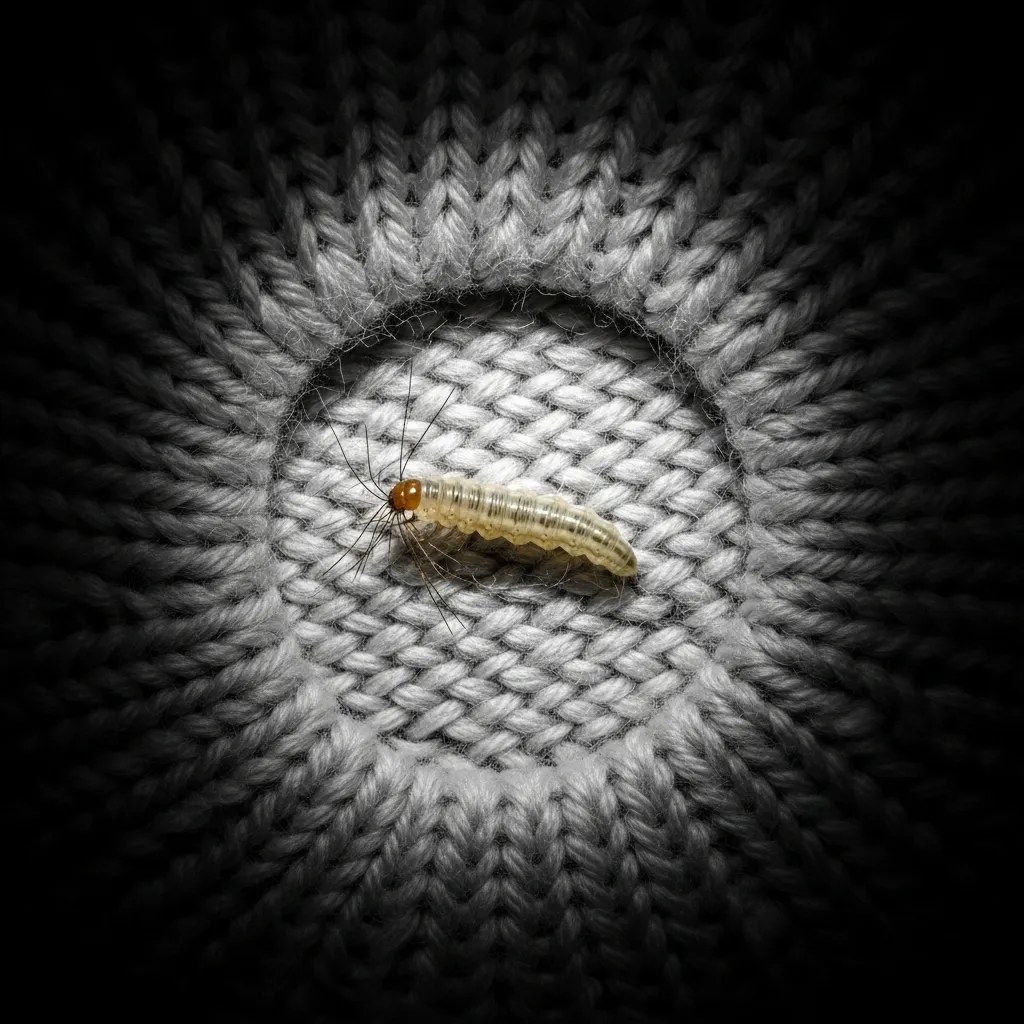
The Right Tools for the Job: Containers and Pest Prevention
With your clothes clean and your location chosen, it’s time for the “Contain” phase. Selecting the right container is about more than just finding a box that fits; it’s about creating the perfect micro-environment for your specific fabrics. This is also where we proactively tackle the biggest fear in clothing storage: preventing moth damage and other pest-related disasters.
Breathable vs. Airtight: What to Use and When
The type of fabric determines the type of container it needs. There are two main categories:
Breathable Containers: These are made from materials that allow for air circulation, which is essential for natural fibers. Think canvas storage boxes, zippered cotton garment bags, or even clean, white cotton pillowcases for very delicate items. Use breathable storage for materials like wool, cashmere, silk, leather, and linen. Trapping these fibers in an airtight container can cause moisture to build up and lead to fiber damage or yellowing.
Airtight Containers: Clear plastic bins with gasket-sealed, locking lids are the gold standard for protection against water, dust, and pests. They are perfect for storing durable cottons, denim, and synthetic fabrics like polyester and nylon. The clear design allows you to see what’s inside without unstacking everything. A standard 66-quart bin, which is roughly 24 inches long by 16 inches wide and 13 inches high, is incredibly versatile for most folded garments.
Worked Mini-Example #1: The Winter Sweater Bin Plan
Let’s put this into practice. Imagine you have 10 bulky winter sweaters to store. Natural wool and cashmere need to breathe.
1. Measure Your Space: Your top closet shelf is 40 inches wide and 20 inches deep.
2. Choose the Container: You find some lovely canvas storage boxes that are 19 inches wide, 15 inches deep, and 12 inches high. Two of these will fit perfectly side-by-side on your shelf (19 + 19 = 38 inches wide), leaving a little breathing room.
3. Fold and Pack: Gently fold your clean sweaters. To avoid a center crease and save space, use a “file fold” where you fold the item into a rectangle and store it vertically in the box, like a file in a filing cabinet. You can easily fit 5 sweaters per box this way without crushing them.
4. Label: Create clear, bold labels for the front of each box: “WINTER – WOOL & CASHMERE SWEATERS” and “WINTER – COTTON SWEATERS & CARDIGANS”. Now you know exactly what’s inside at a glance.
The Great Debate: Cedar vs. Mothballs
When it comes to pest prevention, there’s a lot of old advice out there. Let’s clear it up.
Cedar: Aromatic cedar contains a natural oil that is a powerful pest repellent. It doesn’t kill moth larvae, but moths and other insects hate the smell and will stay away. It’s a safe, natural, and pleasant-smelling option. You can use cedar blocks, balls, sachets, or hangers. The key thing to remember is that cedar oil dissipates over time. To keep it effective, you must refresh it every 6-12 months by lightly sanding the wood or dabbing it with cedar oil.
Mothballs: This is an old-school solution that we no longer recommend for home use. Mothballs are a solid pesticide that works by releasing a toxic gas to kill moths and their larvae. They contain either naphthalene or paradichlorobenzene, which can be harmful to people and pets if inhaled over long periods. The odor they leave on clothes is incredibly difficult to remove. If you must deal with an existing infestation, it’s better to have items professionally cleaned. For preventative measures, stick to safer alternatives. If you are handling old mothballs, please refer to guidance from the U.S. Environmental Protection Agency (EPA) for safe disposal.
Better Alternatives: Along with cedar, dried lavender sachets, rosemary, cloves, and mint can also act as natural pest repellents. They are safe and will leave your clothes with a subtle, fresh scent.
Are Vacuum Storage Bags a Good Idea?
Vacuum-sealed bags are amazing space-savers, especially for incredibly bulky items. However, they are not a one-size-fits-all solution.
Pros: They can shrink down puffy coats, ski gear, and comforters to a fraction of their size, freeing up a massive amount of storage space. They also offer complete protection from dust, moisture, and insects.
Cons: The intense compression causes deep, stubborn wrinkles. They are not suitable for delicate or natural protein fibers like wool, cashmere, or down feathers, which need to breathe and can be permanently crushed by the vacuum pressure. Over-compressing can also damage zippers and buttons.
The Verdict: Use vacuum bags strategically. They are best for durable, synthetic items like polyester-fill ski jackets or spare bedding. When you use them, don’t suck out every last bit of air; leave a little bit of loft to be kinder to the contents.

















